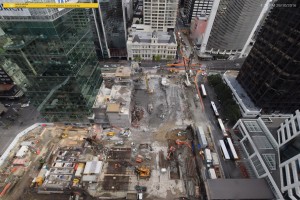Auckland in the 1990s was a very different city, Property Council Chief Executive Connal Townsend recalls
It saw itself as something it was not, at least not yet. It had international ambitions but could not yet compete with other cities around the world. Auckland was simply New Zealand’s biggest city, nestled quietly away at the bottom of the Pacific.
Fast forward twenty years, and Auckland is what KPMG calls a Magnet City. It attracts people, investment, and ideas. They are internationally connected. Magnet Cities grow. Auckland can now stand shoulder to shoulder with other international cities, but there is still work to be done.
The problem is that despite its 1990s vision, Auckland, prior to amalgamation failed to plan for the success it would attract. The result; a severe housing shortage with soaring prices and a lack of infrastructure to cope with a rapidly growing city.
Because of poor planning and previous under investment in infrastructure, Auckland is barely treading water.
But it is not all doom and gloom. Auckland Council and Central Government do have projects underway that will ease some transportation woes. And they are working on how to fund infrastructure to cope with future population growth.
The City Rail Link (CRL) is already stimulating development, spawning the construction of office and retail in the CBD. For example, the Precinct Properties Commercial Bay development is integrating a 39-level commercial office tower with a world class retail centre on Auckland’s waterfront. Further commercial and residential development is occurring along Albert Street.
Large transport projects are underway. The $1.4 billion ‘Waterview’ tunnel will link the south-western and north-western motorways. The tunnel is the missing last connection of the existing motorway network.
More importantly the Government and the Auckland Council have recently agreed to the Auckland Transport Alignment Project (ATAP) to help ensure integrated planning, decision making and funding for future Auckland transport projects.
One of those future projects is the ‘northern corridor which will turn a section of the SH18 Highway east of Albany into a full motorway, providing a direct connection to Northbound SH1 Highway. This initiative will stimulate future population growth and housing development in the area.
At the other end of New Zealand’s North Island, Wellington is evolving into a different kind of Magnet City, one that invests in and promotes its own uniqueness. It is not trying to compete with Auckland, far from it, but rather complement.
Wellington wants to become what in Magnet City parlance is known as a “second city”. Its attraction strategy is how it is different to Auckland and in doing so highlights its own strengths; the movie / tech industry, tourism, cafes and culture, tertiary education, and Government.
Fortunately, Wellington is not grappling with major transport infrastructure challenges. The recently opened Mackays to Pekapeka expressway will relieve existing congestion around the Kapiti Coast.
The soon to be completed Transmission Gully motorway will provide an additional transport route up the coast, linking into the Hutt Valley, and feeding into and out of the CBD, port, and airport. The areas it will open-up for development to accommodate growth are huge.
Those investments are not primarily about solving existing problems but are to avert future ones and unlock growth potential. This proactivity could be called ‘luck’ because, like Auckland in the 1990s, there is no obvious coherent spatial or development plan.
What is missing in Auckland and Wellington, and the rest of New Zealand’s major urban areas, is integrated urban planning, decision making and funding for infrastructure and the built environment. Central and local government talk past each other rather than engage in active conversation on the issues they are both facing.
A contributing factor to this, is the complex myriad of legislation and regulation. While many claim New Zealand has a world class Resource Management Act, the truth is it is not working for the environment or development.
In reality, built environment and infrastructure decision making and funding are spread over many Acts, and more keep being added to the statute book to circumvent it and speed up development. It is a mess.
It is time for a total rethink in New Zealand about how we plan, fund and build our cities. That does not mean we need to throw the baby out with the bathwater. We need to review spatial planning, land use planning, local and central government decision making and funding for the built environment and infrastructure development. Planning and environmental protection needs to integrate with economic development.
There is an increasing ground swell towards such a reform. Property Council will be a central part of that conversation. Why? Because New Zealand cities must grow, and evolve in a coherent way. This is non-negotiable if they are to flourish as Magnet Cities in the Asia-Pacific.



